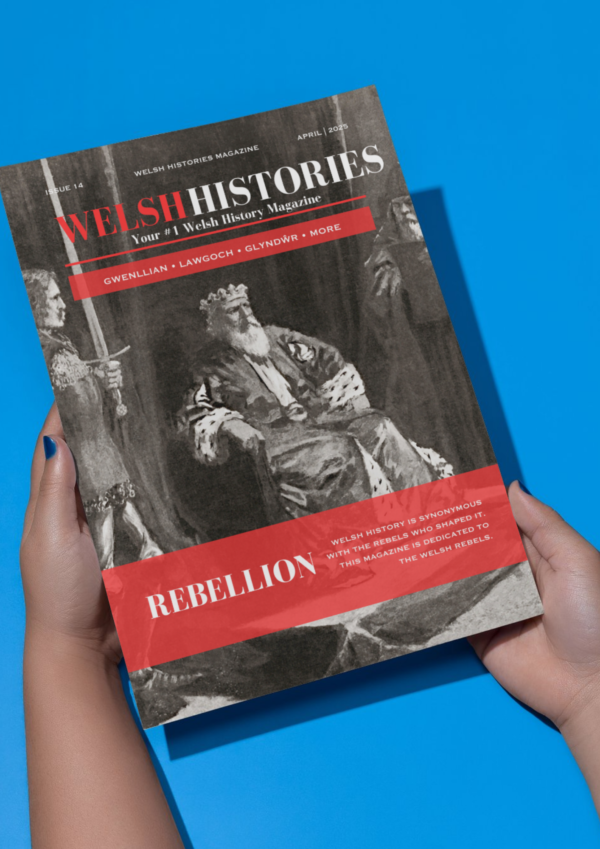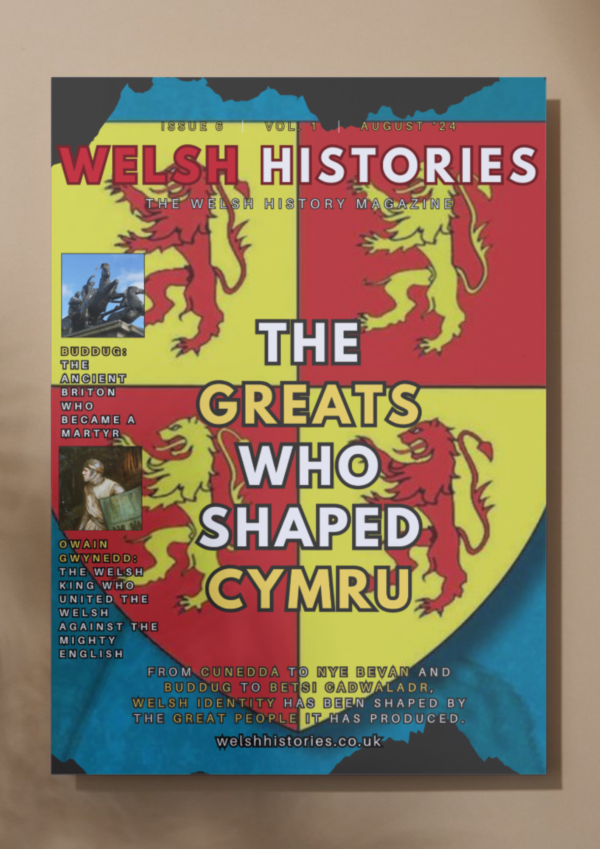Your basket is currently empty!
19th Century Welsh Jobs Captured by John Thomas
Ever wondered what kinds of Welsh jobs early people did? While some roles have been lost to time, yet they helped shaped the Wales we know today.
#1.
This photo was captured by famed Welsh photographer John Thomas in 1885 and shows R Evans, a wheelwright from Yr Ystog (English: Church Stoke), Powys.

A wheelwright was (and still is) a craftsman who creates and repairs wooden wheels. Wooden wheels were essential for millennia but the tide was changing either towards the end of Evans’ life or just after as, by as early as the 1920s, wooden wheels had been almost entirely replaced.
That being said, the wheelwright was a respected trade for centuries within Cymru and wider Britain. Though the rapid industrialisation of the 20th century decimated the industry, it does still survive and there are still wheelwrights out there.
#2.

Photographed here is a woman working as a “classic servant” in the year 1875. Sadly, we do not know her name – one of the many thousands of 19th century “servants” whose name has been lost to time.
Servants in 19th century Cymru were pretty commonplace. Often, they were women from poorer backgrounds – and never from the same family as the one they served – and they would live with the family, performing household chores. Few were treated well while many, sadly, were not.
This photograph once more comes from the legendary Welsh photographer, John Thomas (1838-1905).
#3.

This is another photo from the John Thomas 19th century photograph collection available at Llyfrgell Genedlaethol Cymru | The National Library of Wales.
This one is titled “the Last of the Old Candle Makers (Davies)” and was taken in the year 1885. For centuries and even millennia, candle making was a relatively unchanged art – as well as a big business if you happened to be good at it. If you were a candle maker, you had your craft and you worked at it for most of your life.
This changed drastically in the 19th century, however. In the year 1834, Joseph Morgan, a pewterer (meaning someone who makes pewter utensils) of Manchester patented a machine which would reshape candle making.
This machine could continuously produce molded candles at a pace of around 1,500 candles per hour. Whilst the claimed intention was to make candles more affordable to those less well off (which it did), it also drove many old candle makers, such as the man in the photograph, out of business. This photo, therefore, truly captures the expression of the “last of the old candle makers”.
#4.

This photo was taken by John Thomas in 1885 and it shows a road worker named Hugh Rees of Tal-y-bont (Ceredigion).
If working on roads is a hard job now, in the late 19th century, it was even more so. Without the machinery and equipment available to workers in the 21st century, many were armed with little more than two hands; a shovel and the knowledge of what to do.
With the rising popularity of the railway in the 19th century, many roads had become neglected throughout Victorian Britain and it meant maintenance had become even more of a hard graft. No doubt, Hugh Rees was as tough as nails.
#5.

This photo was taken by Welsh photographer, John Thomas (1838-1905), and it shows a woman – wearing traditional Welsh dress – working with a spinning wheel.
In 19th century Cymru (and, indeed, the rest of the world), a spinning wheel was used for turning fibre into thread (or yarn). Then, it would be woven into cloth on a loom.
It is often believed that the spinning wheel was invented in India, though this is not 100% certain. It would be replaced by the spinning jenny during the Industrial Revolution, though not everyone had access to it, as evidenced in the photo.
#6.

This is a photograph taken in the year 1875 and it depicts an unnamed tailor from Bryn Du, Ynys Môn.
Tailors in 19th century Cymru were highly respected and regarded as skilled. They would make trousers, waistcoats and so forth all by hand for those willing to spend.
This is one of the many photos of working Welsh people taken by John Thomas of Ceredigion.
An ancestor of Henry Cavill? ![]()
#7.
This is John Thomas’ photograph of an unnamed Welsh fisherman in the year 1875.

In the late 19th century, fishermen in Cymru would wear a coat as depicted in the picture. Named the “coat smock”, it was typically worn by Welsh shepherds and its name derives from the fact that, like a coat, it buttons up at the front.
The hat appears to be a typical fisherman sou’wester, also known as a traditional maritime oilskin rain hat.
With our reputation for being a particularly rainy country, it is no surprise that the fisherman was dressed for a war with Mother Nature!
#8.
This is another photo for John Thomas. This time, the photo is of a town crier from Llanrwst, Conwy, and it was taken in the year 1875.

The man (whose name is unknown) is holding a bell – a known tool for any town crier. It could be used to alert of any news; public announcements or emergencies which are relevant to the town. It was a respected profession and one protected by law.
Some Welsh towns still have town criers, in fact, and an internationally recognised competition is set to come to Cymru in September this year. You can read more about it here
Share us your thoughts on niklas@welshhistories.co.uk
Our latest and greatest
-
(UK + EU) YEARLY Subscription Welsh Histories Magazine
£79.99 -
(US & CAN ONLY) YEARLY Subscription Welsh Histories Magazine
£129.99 -
DIGITAL COPY Welsh Histories Magazine – April 2024
£0.99 -
DIGITAL COPY Welsh Histories Magazine – April 2025
£2.99 -
DIGITAL COPY Welsh Histories Magazine – August 2024
£1.99
More from Welsh Histories
Welsh Histories is a Welsh history celebrating platform which looks to promote all aspects of Welsh history. Though we focus predominantly on native Welsh history, we do also share the non-native aspects from time to time. You can follow us on Facebook; Instagram or Twitter for more. A reader? We also have our very own Welsh Histories Shop where we sell our Welsh Histories Magazine. Diolch yn fawr iawn and keep enjoying Welsh Histories.
Sally is a proud wife of a Welshman, editor & writer of Welsh Histories. She’s all about stories—that shout ‘anything Welsh.’ Drop her an email if you have an advice, insight, experience, or a story to share.





